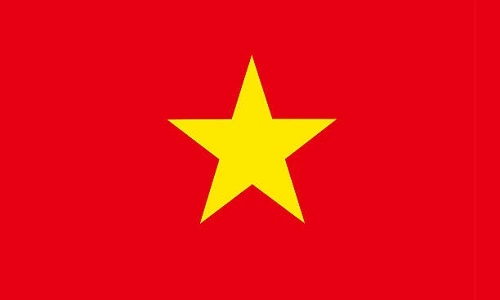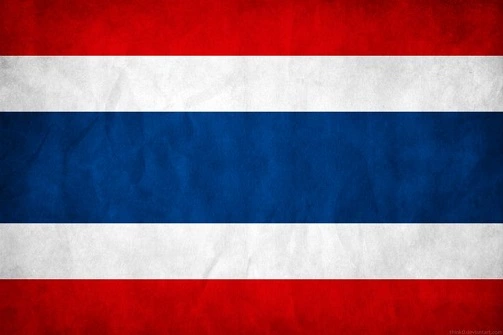Aquaculture is all about the cultivation and harvesting of aquatic organisms, which includes both plants as well as animals. But fishery is something slightly different because it is known as the cultivation or farming of water-based or sea animals such as fish, sponges, shrimps, etc. It is true that aquaculture, fishery, and pisciculture date back thousands of years, and it is believed that the cultivation of aquatic organisms started in China. But in today’s world, fish farming is being carried out on larger scales in many countries around the globe. That is because there is an insanely high demand for fish and seafood among the general population of the world. Without a doubt, fish are known to be a great source of omega-3 fatty acids and other vitamins. Some studies show that consuming fish regularly is good for heart and brain health.
The nutritional content of fish is one thing, people also have taste preferences when it comes to fish consumption. Because it is true that one part of the world’s fish tastes slightly different than others, and it is likely that fish species found in one country are not available in other countries, that is called biodiversity. You may know that China is a nation that prominently takes part in fisheries compared to any other country in the world. And this is where today’s post fits in perfectly because we will be taking a look at the top 10 largest producers of fish in the world. So sit back and relax, because we’re about to take you on a tour of the world’s largest fish-farming countries.
Largest Producer Of Fish In The World
Let’s get going now.
1. China
You may already know China as the country that produces the most amount of fish in the entire world. The production of fish in China is being carried out on a larger scale, thus the other nine countries’ fish production amount is way less than China’s fish production. China’s aquaculture industry skyrocketed in just the last two decades or so. There are three main reasons behind that, the first being the population spiked within the last three decades, thus the demand for fish increased significantly. And to support such high demand, the government of China promoted fish farming on a larger scale among the general population. Talking specifically about last year’s data, China touched an all-time high peak of fish production with 83.9 million metric tonnes.
2. Indonesia
Indonesia’s fish production isn’t half of what China produces every year, but still, Indonesia is considered the second largest fish producer in the world. Same to China, Indonesia’s fish production skyrocketed in just the last decade or so. And 2019 was the year when Indonesia’s fish production was at its all-time high, it was around 23.19 million tonnes. However, after 2019 there was a slight decline in the fish production industry, which could be because of the covid-19 pandemic. Talking about last year’s fish production data in Indonesia, the production amount was well over 22.1 million metric tonnes.
3. India
India is known as the third largest fish producer in the world. However the foundation of aquaculture was laid just two centuries ago, but still India managed to secure the third rank on our list. If you take a look at the growth chart of fish production in India, you’ll notice that since the 1970s, production has increased steadily over the years. And that is because the government and other sources were promoting fish farming on a larger scale in India. As of now, the fish farming sector is big enough to sustain itself, and it has become a primary income source for many people in India. Talking about the statistical data of India’s fish production of last year, India is at an all-time peak of fish production with 14.75 million tonnes of fish produced last year. It is estimated that India will easily surpass the 15 million tonnes mark next year, and the 20 million tonnes milestone by 2025.
4. Vietnam
On many lists on the internet, you’ll find Vietnam as the 8th or 9th largest fish producer in the world, but that’s not true. Here are talking about the combined production of a nation including capturing and harvesting. And if you were to combine the captured fish and farmed fish amount, then Vietnam automatically becomes the fourth largest fish producer in the world. Similar to previous countries on this list, the fish production growth in Vietnam also has been quite steady through the last few decades. In 2021-22, Vietnam produced just over 8.17 million metric tonnes in one fiscal year.
5. Peru
Compared to the top 3 fish producers on this list, the other countries’ contribution to the world’s total fish production isn’t greatly significant. Since we are making a list of the 10 largest producers, therefore we had to talk about other fish producers in the world as well. And Peru holds the fifth rank on the list of the largest fish producers in the world. If you look at the chart of Peru’s fish production over the years, you’ll find there have been a lot of fluctuations. The all-time high fish production in Peru was around 12.4 million metric tonnes (in 1970) and the lowest fish production was just 1.57 million metric tonnes (1983) in one fiscal year. However last year, Peru produced well over 6.21 million metric tonnes of fish.
6. The United States
Since 1985, there hasn’t been recorded insane growth in fish production in the USA, it mostly stays in the range of 5 to 6 million tonnes every fiscal year. The USA could have surpassed the 6 million metric tonnes mark by 2020, but then the covid-19 pandemic happened. Thus, as with all the other sectors, fish farming also recorded a significant downfall after 2019. However the fish farming industry of the USA got on track quite faster, and last year, the USA produced well over 5.6 million metric tonnes of fish in just one year.
7. Russia
When the USSR existed, it was producing well over 8 million metric tonnes of fish every year, but after the collapse, the Russian federation’s production saw a huge decline, not just in the fish farming sector, but almost all the agricultural sectors. But the noteworthy thing is that Russia has increased fish production steadily since 2005. And the total fish production in Russia is increasing by a few percent every year. After the 1991 USSR collapse, Russia is back on track with fish production, that’s why last year it touched all-time high production after 1991. More specifically, last year Russia produced more than 5.5 million metric tonnes of fish in just one year.
8. Japan
Japan used to be known as one of the most prominent and leading fish producers in the world just before the 1990s. But after 1988, the fish farming and capturing industry almost collapsed in Japan. And since then, Japan is on a continuous decline in fish production, even in 2022. Japan is a perfect example of what happens when a nation gets into the overfishing of water bodies. Overfishing is the prime reason why Japan’s fish farming and capturing industry is on the verge of collapsing completely by 2030. Talking about last year’s fish production data, Japan’s total fish production in 2021-22 is around 4.11 million metric tonnes.
9. Chile
Similar to the neighboring country Peru, Chile’s fish production also fluctuates a lot. However, Chile has been somewhat consistent in producing fish every fiscal year since the early 2000s. But as per the forecast, and the last two decades’ fish production data, Chile is still on a decline in terms of fish production. It is estimated that Chile’s fish production will stay below the 5 million metric tonnes mark for quite some time. Considering the fresh data, in the last year, Chile produced just around 3.78 million tonnes of fish in one fiscal year.
10. Thailand
Last but not least is Thailand, which produced 2.9 million metric tonnes of fish in 2021-22. Thailand was also on a decline in terms of fish production since 2006, but in just the last two or three decades, the fish farming industry has started growing once again. Thus you may see Thailand ranking higher in this list within a few years, we’d update this list as it happens.
Conclusion
Don’t you think the data about fish farming and production in the world seem interesting? Anyway, this was the detailed list of the top 10 largest producers of fish in the world to let you know that there are other players in the game other than China, Indonesia, and India.
World Fish Production FAQs
Q. What types of fish are commonly produced worldwide?
Ans: Commonly produced fish include species like carp, salmon, tilapia, tuna, catfish, and sardines. The types of fish produced vary by region and depend on factors such as climate and local preferences.
Q. How is fish production measured?
Ans: Fish production is typically measured in terms of weight, often in metric tonnes (1 tonne = 1,000 kilograms). This measurement includes both capture fisheries (wild-caught fish) and aquaculture (farmed fish).
Q. What is the role of aquaculture in global fish production?
Ans: Aquaculture, or fish farming, plays a significant role in meeting the increasing demand for fish. It involves the controlled cultivation of aquatic organisms such as fish, shrimp, and mollusks. Aquaculture has become a major contributor to overall fish production.
Q. How has global fish production changed over time?
Ans: Global fish production has generally increased over the years to meet the growing demand for seafood. Changes in technology, improved fishing methods, and the expansion of aquaculture have contributed to this trend.
Q. What are the environmental concerns associated with fish production?
Ans: Environmental concerns include overfishing, habitat destruction, bycatch (unintended capture of non-target species), and the use of harmful fishing practices. Aquaculture also raises concerns related to water pollution, disease transmission, and habitat alteration.
Q. How does fish consumption contribute to global food security?
Ans: Fish is an important source of protein and essential nutrients for many people around the world. As a relatively efficient source of protein, fish plays a crucial role in addressing global food security, particularly in regions where access to other protein sources may be limited.
Q. Are there sustainable practices in fish production?
Ans: Sustainable fishing practices aim to ensure that fish stocks are harvested at a level that allows them to replenish and maintain their population. Certification programs, such as those by the Marine Stewardship Council (MSC), help consumers identify sustainably sourced seafood.
Q. What are the future trends in world fish production?
Ans: Future trends may include increased reliance on aquaculture, the development of sustainable and responsible fishing practices, advancements in technology to monitor and manage fisheries, and efforts to address the environmental and social impacts of fish production.

























